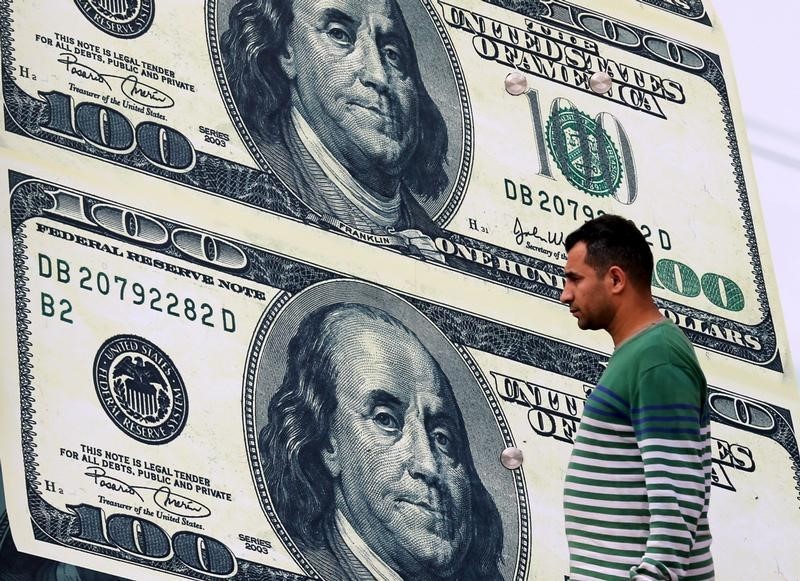By Peter Nurse
Investing.com - The U.S. dollar climbed to a fresh new 20-year high in early European trade Tuesday, with the euro falling close to parity on global growth worries, Europe’s energy concerns and expectations of further aggressive rate hikes by the Federal Reserve.
At 2:55 AM ET (0655 GMT), the Dollar Index, which tracks the greenback against a basket of six other currencies, traded 0.4% higher to 108.225, having earlier climbed to 108.47, its highest since October 2002.
The dollar has soared this year as the U.S. Federal Reserve has proved to be one of the most aggressive central banks in tightening monetary policy in order to curb rampant inflation.
The Fed hiked interest rates by 75 basis points in June, its largest rate increase since 1994, and Wednesday’s CPI release is expected to rise to 8.8% on an annual basis in June, pointing to another hefty hike.
“We think the overall message for markets is that further aggressive tightening from the Fed remains warranted, which should consolidate a supportive underlying narrative for the dollar,” said analysts at ING, in a note.
EUR/USD fell 0.2% to 1.0021, after falling as low as 1.0006 earlier Tuesday, the weakest since December 2002.
The single currency is being hit by concerns of a potential energy supply crunch in the region as the biggest single pipeline carrying Russian gas to Germany, the Nord Stream 1 pipeline, has begun its annual maintenance on Monday, with flows expected to stop for 10 days.
French Finance Minister Bruno Le Maire said on Monday that Europe must prepare for a full shutdown of Russia’s gas flows, with many fearing that Russia may take this opportunity to halt or considerably trim its exports.
“There has been much discussion about EUR/USD hitting parity and given the lingering downside risks … the chances of this happening as early as this week are quite high,” ING added.
Attention will shift to the release later in the session of the German ZEW economic sentiment index for July, which is expected to weaken substantially as growth slows in Europe’s leading economy.
Elsewhere, USD/JPY edged lower to 137.38, after hitting a fresh 24-year high of 137.75 on Monday, after Bank of Japan Governor Haruhiko Kuroda pledged to keep its soft monetary policy stance to try and boost the country’s troubled economy, even as its currency slumps.
GBP/USD fell 0.2% to 1.1865, earlier sinking to a fresh two-year low at 1.1847 as the ruling Conservative party attempts to decide upon its next leader and thus prime minister.
“We expect sterling to be only modestly influenced by the Tory leadership contest, and downside risks stemming from the challenging external environment, a grim domestic outlook and a potential dovish repricing of the Bank of England’s rate expectations look set to remain much more relevant,” ING said.
Risk-sensitive AUD/USD fell marginally to 0.6729, just above the two-year low reached on Monday, while USD/CNY rose 0.2% to 6.7304, with the yuan weighed by renewed COVID outbreaks in China.
